Bringing closure to as tumultuous and influential an anime as Evangelion is a task of confounding proportions. Back in 2007, the Rebuild of Evangelion film series started with the intention of being the definitive final word on the franchise, but when it came time to produce the fourth and final installment, numerous setbacks delayed its premiere from 2008 to 2015, and now to 2021. With so much anticipation and so many expectations to answer, it would hardly be surprising if the movie was a spectacular flop. But against the odds, Evangelion 3.01+1.01: Thrice Upon a Time is exactly the conclusion that we needed.
Before I get into the weeds, I want to make it clear that I’m coming at this as a long-time fan of Evangelion. What Star Wars has been to so many, Eva is for me, with the added benefit of helping me explore the inner depths of my psyche. I discovered the series in high school thanks to friends, and spent many days discussing and speculating every aspect of it with them. Even my screen name is a reference to the series. And as a fan whose identity was shaped in part by this experience, Evangelion 3.0 + 1.01 (also known as Shin Evangelion) is an immensely satisfying work. While I had plenty of questions by the time the credits rolled, I came away feeling…at peace. It’s as if the 20+ years since I discovered Eva, and the personal journey I’ve taken as a human being during that time, are reflected in the progression and transformation of the characters themselves.
Warning: Heavy Spoilers Ahead
Neon Genesis Evangelion
The TV series Neon Genesis Evangelion is an exploration of the inner turmoil of people who desperately try and fail to connect to others while engaged in a futuristic battle of biblical proportions. The protagonist, 14-year-old Ikari Shinji, is brought before his estranged father, Gendo, and ordered to work for his organization, NERV, by piloting a mysterious biomechanical titan known as an Evangelion (or EVA) to fight off reality-defying monsters from above called Angels. But Shinji suffers from severe depression due in part to being abandoned by his father at a young age, and his relationship with his father is one of craving acceptance and acknowledgment. He soon meets other EVA pilots (collectively known as the Children), notably the hauntingly quiet Ayanami Rei and the aggressively competitive Sohryu Asuka Langley, each of whom have their own complex issues. Later, Shinji also meets a pilot named Nagisa Kaworu and establishes an intense bond, if only briefly.
An overt recurring theme of NGE is the idea that it’s impossible for humans to truly understand one another. Often mentioned is the Hedgehog’s Dilemma: a metaphor for people who are afraid to pursue close relationships because of the risk of hurting themselves. The EVAs and Angels fight using Absolute Terror Fields, nigh-impenetrable force fields that are revealed to exist to a lesser degree as the psychic walls that separate human hearts and minds from one another. Another concept thrown around is “Instrumentality,” a state in which all humans are fused together physically and spiritually, and where no barriers to misunderstanding exist.
NGE’s legacy is in part the popularization of what would become the mysterious doll-like character archetype (Rei) and the tsundere (Asuka), but it also does an amazing job of articulating psychological and emotional pain. That said, one potential weakness is that it does little in the way of offering solutions or steps to overcome that internal suffering, despite a desire to inspire and motivate its viewers by the end. In fact, the bizarre and trippy final episodes of the series were heavily lambasted at the time of airing, with director Anno Hideaki discovering that angry fans were discussing ways to kill him—an experience that contributed further to his depression at the time. In response, he created a pair of bitter “compilation” movies that revised the last parts of the TV series into a brutally violent trauma festival where the protagonist Shinji rejects Instrumentality but fails to make an actual firm decision on which direction he wants humanity to take.
Rebuild of Evangelion (Thus Far)
In a sense, the Rebuild films are heavily revised formations of Eva that are far more than either a retcon or, in Star Wars terms, a “Special Edition.” Existing elements might be 99% similar, but that 1% makes a crucial difference. A new pilot, Makinami Mari Illustrious, is introduced, and she seems to lack the baggage of the other Children. Most importantly, compared to NGE, Rebuild sees the characters initially tracing the same path, but taking gradual steps to challenge the Hedgehog’s Dilemma instead of living in fear of it. Each film gets further and further away from the original, and by the time of the third entry—Evangelion 3.33: You Can (Not) Redo—thrusted the characters fourteen years into the future, the idea that Anno had ruined Eva was accepted by many.
I disagreed and wrote a long review of Evangelion 3.33 that was part defense and part analysis of how Anno was trying to “address the differences between older and newer anime narratives, create a Tale appropriate for contemporary culture, and respond to current criticisms of youth culture.” I began by referencing an essay Anno penned expressing concern about the decline of the “Tale”—the kinds of grand narratives like the “journey to another galaxy to save the Earth” plot of Space Battleship Yamato that used to be common in anime—and his desire to see them return. I ended by making my own prediction on what the “Tale of Evangelion” would be, based on my analysis of the third film as a criticism of those who admonish the youth for being not hard-working enough:
A 14-year-old boy estranged from his father and suffering deep personal agony is thrust into a situation far greater than him, and though he is told to sacrifice himself for the greater cause, through the connections he makes with his peers he finds that he would lose too much in the process, including his own identity. This prioritization of the self and what he finds valuable in life does not come without its own consequences, but it becomes the potential ground for him, and those like him, to find their own solutions to the problems of the world. Of course, the fourth film has yet to debut, so we’ll see if I’m right.
At the time, I expected to get an answer fairly quickly, but history repeated itself and Anno fell into depression again, with the catalyst that brought him back being, of all things, working on the film Shin Godzilla. So now, coming into 3.0+1.01, I indeed wondered how my predictions would fare, but more importantly, I wondered how this final film might choose to resolve (or leave open) much of the baggage of Eva, both within the works and within Anno himself.
Finally, Shin Evangelion
The end of the third movie has the three pilots surviving a traumatic battle and wandering into a post-apocalyptic world, with Asuka pulling Shinji up and out of his cockpit, and Rei (or rather, a clone of Rei) following along after having just awakened to her own individuality. The symbolism of that moment, of seeing them reach out to one another, encapsulates the challenge to the Hedgehog’s Dilemma that Rebuild of Evangelion. Evangelion 3.0+1.01 comes in almost directly after that moment, and leads into what I can only describe as a thorough (yet never boring or tedious) conclusive response to all the thematic and cultural fragments of Eva that have piled up over the years, and that the general contours of my above prediction about Evangelion 3.0+1.01 have come to pass.
Shinji and Space
The early part of the Evangelion 3.0+1.01 sees Shinji, Rei, and Asuka staying in a makeshift farming village, where they reunite with some old school friends who have established their own lives. It can feel far removed from what’s expected of Eva, but there is a great significance to this part of the story. During this time, Shinji most greatly resembles the Shinji of the old TV series: retreated into his shell in a state of depression, too weak to do anything but not weak enough to want to die. But while NGE would have characters, at best, try to force Shinji out of his shell, here you see him finally get what he needs to heal: support that understands who he is and the space he needs to find himself. It’s a process that can’t be rushed. In this town without any EVAs to pilot, the characters experience a slice of what it would be like to discover themselves and what they truly want.
Rei and Opportunity
Rei is a major catalyst in Shinji’s change, and I’m reminded of something her voice actor, Hayashibara Megumi, wrote in her career memoir: In order to help Hayashibara understand the character better, Anno explained that Rei doesn’t lack emotions—she’s just unfamiliar with them. The result is a person who doesn’t have the filters humans establish to operate in society, and with the different Rei’s we’ve seen over all of Eva, we see it play out in different ways.
It’s witnessing the current Rei clone in an environment where she can discover life with child-like wonderment that awakens Shinji and brings him to a state of calm that we have never seen in any mainline Evangelion work (Super Robot Wars and Shinkalion don’t count). Back at the very, very beginning of both NGE and the first Rebuild film, Rei was Shinji’s original reason for piloting EVA-01 due to his guilt over seeing her in pain. But while this Rei ends up in an even worse place, what seems to be in Shinji’s heart is not guilt or regret but determination to help others. He decides to fight for the happiness of those he cares for, instead of as a desperate attempt to find acceptance.
Asuka and Time
Evangelion 3.33 begins with a 14-year jump forward in time. Much of that third film feels very jarring because of how much the characters have changed and how bitter they feel towards Shinji for triggering the apocalypse, but in Evangelion 3.0+1.01, it also shows how time has transformed characters inside and out. Toji and Hikari (two of Shinji’s old classmates) have a family together. Katsuragi Misato, Shinji and Asuka’s old guardian, takes on a gruff, Okita-like exterior which, along with WILLE (the organization she leads to oppose NERV) come from her desire to protect her children, both figurative and (as we find out) literal. But out of all the characters, Asuka’s growth in this timespan is especially significant.
Due to being an EVA pilot, Asuka has not aged physically. However, she has matured mentally, and the final film establishes how she’s grown over those 14 years while Shinji was in stasis. She’s still Asuka at her core, but an Asuka who doesn’t seek validation, and it helps her communicate with others in her own way. Earlier in the film, when Shinji is listless, she basically forces food down his throat, in essence telling him that she’s going to help whether he wants it or not. Later, she has a brief heart-to-heart with Shinji about how one of his biggest problems isn’t that he makes the wrong decisions, but that he’s afraid of making decisions and owning them—and such indecisiveness can end up making things worse. As Asuka departs for combat, she even mentions that she did indeed have feelings for him back then, but she’s grown past that point. In other words, Asuka is no longer the tsundere who can’t be honest with her feelings.
Between Asuka, Shinji, and Rei, one gets the sense that the timeskip is also addressed toward the viewers. The jump into the future brings those characters out from their 1990s roots and shows how people like them (or indeed character archetypes like them) might have transformed two or three decades later.
Action and Homage
The fights in Evangelion 3.01+1.01 do a lot of things at once. While they’re thrilling from a technical perspective (sometimes to the point of being overwhelming), they’re also windows into the components that make up Eva as a whole. Some of the fights are closer to that classic Eva style, drawing inspiration from the tokusatsu stylings of Ultraman. Others completely flip the script on what Eva fights are supposed to look like, as the enemy they face isn’t individual Angels but rather entire armies of chimeric EVAs that almost trivialize the specialness of the EVAs themselves.
And then there’s the battle that basically comes across as Anno’s love letter to Space Battleship Yamato. The third film introduces the Wunder, a flying fortress that functions, and in the fourth film we see it engage in a ship-to-ship combat scene straight out of Yamato, complete with the old-fashioned orchestral soundtrack. If Yamato is the gold standard of the Tale, and that style of story is woefully underrepresented in anime over the past two decades, then putting in a Yamato-esque fight potentially feels like there’s a desire to indeed bring Rebuild of Evangelion into one cohesive whole. At the same time, Anno’s ability to add in all of these elements of his life—his favorite shows, his depression, his feelings about Eva itself—suggest a desire to communicate another important lesson: when it comes to stories, you can have your cake and eat it too. You can put in all the escapist elements and the otaku fantasies, but you can also bring it all together and motivate people to return to reality.
Out of all the battles, though, there’s one that stands head and shoulders above all as arguably the most important conflict in all of Evangelion: At long last, Shinji directly confronts his father, Gendo.
Shinji vs. Gendo
Seeing Shinji finally come face to face with Gendo, determined to settle things once and for all, was a powerful emotional experience. Even before anything truly began, I couldn’t help but smile as my body was jolted by a strange catharsis. To see this culmination of two and a half decades, to see Shinji do what he has never dared even try—it’s like the film and Eva as a whole are showing how Shinji has truly healed and grown into a better place. In that moment, the boy has finally become a man, and it has little to do with the new generation taking over the old. Rather, Gendo is the source of so much of Shinji’s grief, but in the ensuing confrontation, Shinji sees Gendo not as the distant and intimidating patriarch but another human being who, like him, has trouble sharing his feelings.
Gendo reveals that he has merged with an Angel and given up his humanity, and the fight between Shinji and him takes them on a tour through Shinji’s memories. It’s explained as them being in the realm of God that defies all physics and human comprehension, Minus Space, and so this is how Shinji’s mind is interpreting what’s there, but it’s also a two-fold callback to Neon Genesis Evangelion. First, many of the Angel fights featured psychological deep-dives full of abstract imagery. Second, NGE uses quite a bit of recycled footage in artistic ways. Rather than truly reused scenes, however, the fight sees their respective EVAs, EVA-01 and EVA-13, clashing against familiar backdrops without consideration for size and scale differences, as if to say that this fight is about the big as well as small moments that permeate Eva.
During their battle, Shinji notices that they’re in a stalemate—all of his EVA-01’s moves are mirrored by Gendo’s EVA-13. Shinji comes to the realization that this conflict cannot be solved through violence, and begins a true conversation with Gendo. He asks his father about what makes him tick, what motivates him to take things so far as to try to essentially remake the whole of humanity, and the answer is that Gendo is all too much like his own son.
Gendo goes through his entire history, explaining how as a boy, he cherished solitude and the calculated predictability of things like a finely tuned piano. Meeting his future wife, Yui, taught Gendo that he could find happiness living with others, but after her tragic death/disappearance (she was caught in an EVA experiment gone haywire and absorbed into it), Gendo was afraid that he could no longer return to his old way of being. Gendo has actually never been contemptuous of Shinji but rather scared of him—scared of having another connection that could be severed. This is even visually manifested when Gendo’s AT Field activates to his own surprise; it implies that he feels (absolute) terror towards his son. The only way Shinji can make it through was by handing Gendo back the old portable music player that both have used as a mental respite from the world.
Gendo built up power and a fearsome presence as protection for his own emotions. In doing so, he passed down his suffering to his son. It’s only after Shinji tries to understand (but not necessarily forgive) his father that this cycle could be broken. Just like in The End of Evangelion, Gendo could never forget Yui and would go to any lengths to bring her back (down to killing the gods if he needed to), but Shinji effectively saves him from that path—and as it’s revealed, Yui saves them both in turn.
Healthy Connections
The Shinji we see as Evangelion 3.0+1.01 starts its build to the end is one who has found his center and now aids the other Children in reaching peace and acceptance themselves. This process of Instrumentality is not the forceful clashing of souls that bring all the ugly demons to the surface like in NGE, but something calming and joyful. The world Shinji looks to remake isn’t one where humanity has evolved into a single entity, but one where humanity has the ability to move forward, and where EVAs don’t exist.
One notable aspect of these scenes is that they call back to not just the previous Rebuild films but also what came before. Regardless of whether this is meant to be merely symbolic or is actually saying that all the Eva anime exist in the same multi-reality and are all connected, the result is a move towards resolution as a whole. When talking with Asuka, Shinji and her return to the beach at the final parts of The End of Evangelion. This Asuka is actually wearing the plugsuit uniform of NGE (a visual marker of the difference between Sohryu and Shikinami), and when Shinji says, “I loved you too,” he’s both responding to the future Shikinami’s casual reveal of her old crush and the more emotionally stormy Sohryu.
Similarly, when Shinji is talking with Rei (who is initially presented as a kind of ethereal presence with uncharacteristically long hair), behind them is footage from The End of Evangelion during Shinji’s mental breakdown. In that movie, Rei wanted to rescue Shinji by starting Instrumentality, and giving him control, only for him to reject it partway (thus resulting in another half-decision). This time, Shinji is the one who seeks to say goodbye to all Evangelions (a statement that clearly has a double meaning between the mecha and the franchise) but has peace and compassion in his heart rather than conflict and shame.
Unlike The End of Evangelion, Instrumentality in Evangelion 3.01+1.01 is not initiated with the Spear of Despair, Longinus, a reference to the crucifixion of Jesus Christ that in the context of Eva is a weapon capable of piercing the divine protection of AT Fields. It also doesn’t use the weapon obtained initially by Shinji, the Spear of Hope, Cassius. Rather, Instrumentality is accomplished by using the Spear of Will, Gaius, a new weapon created by Misato aboard the Wunder. This isn’t supposed to be possible, but it’s all in the name: Gaius has been willed into existence. This also reflects the vital difference in Misato’s organization, WILLE, compared to all the other groups that have shown up in the Eva franchise. Unlike NERV (“nerve”), SEELE (“soul”), and GEHIRN (“brain”), WILLE (“will”) is about what humans create rather than what has been created for them.
Looking again at my prediction about the final film, I wrote, “This prioritization of the self and what he finds valuable in life does not come without its own consequences, but it becomes the potential ground for him, and those like him, to find their own solutions to the problems of the world.” I believe this plays out through the Instrumentality of Evangelion 3.0+1.01. Prioritizing the self means helping oneself in order to help others, and that process wills a solution into existence.
Kaworu and Love
Aside from Asuka and Rei, there’s another character Shinji connects with during Instrumentality: Nagisa Kaworu. While I only briefly mentioned Nagisa earlier, and he indeed only appears for one episode in NGE, the character actually has an outsized impact on Eva as a whole. The twist with Kaworu is that he reveals himself to actually be an Angel in human form, that Rei is much like him, and that he was sent by the organization above NERV, SEELE, in a betrayal. Even so, it’s clear that his love and compassion for Shinji is genuine, and Kaworu even allows Shinji to kill him at the end in one of the most heart-wrenching moments of the TV series. Because of this portrayal, Kaworu has long been a popular character—especially among fujoshi—because of how he could establish a bond with Shinji when no one else truly could.
Kaworu exerts such a tremendous influence that other versions of Evangelion (such as the manga drawn by character designer Sadamoto Yoshiyuki) make the move to introduce him sooner. That includes Rebuild of Evangelion, where Kaworu first appears acting as if he’s been through all this before, and is determined to save Shinji this time around. Here, his actions amount to trying to spare Shinji the pain of the past—even going as far as ending his own life in Evangelion 3.33 to keep the blood off Shinji’s hands this time around. In Instrumentality, Shinji says that Kaworu reminds him of his dad, but in a positive way. Kaworu’s love is so powerful, yet he is literally a higher being to the point that it’s hard to tell how much is romantic and how much is angelic, or if that distinction matters to Kaworu at all. For his part, while that love is genuine, Kaworu made the mistake of thinking he wanted to make Shinji happy, but he himself was looking for happiness through Shinji.
But Kaworu is not the only minor character with major influence, and this requires me to talk about Makinami Mari Illustrious.
Mari and the Outside View
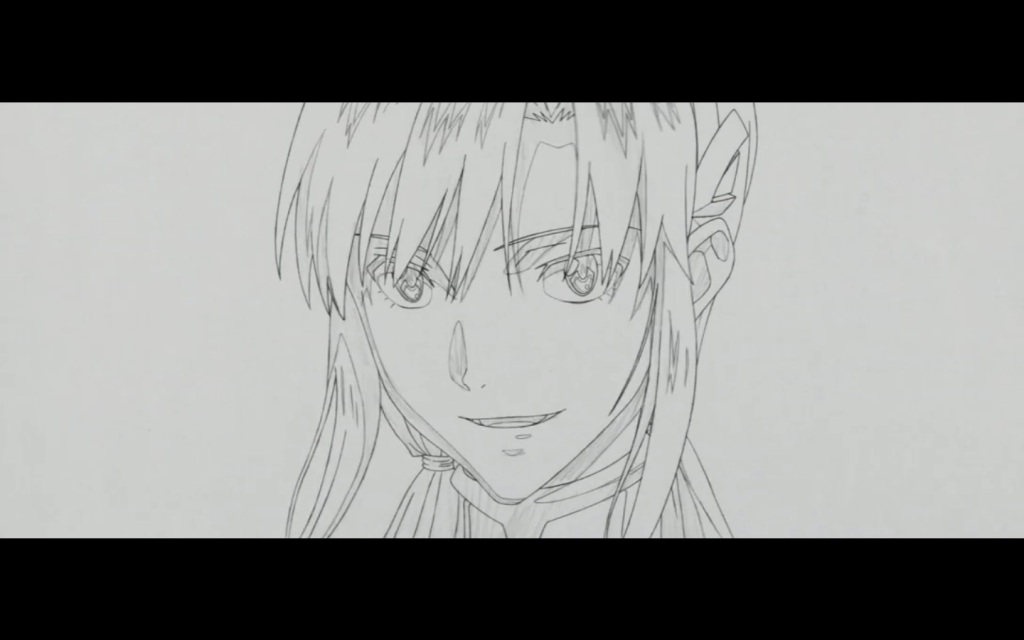
Rebuild of Evangelion is where Mari makes her introduction to the franchise as a whole, and her presence in the films can be puzzling. She’s another pilot, but her story is never explored in depth for three entire films. Yet, it turns out that she’s crucial to Evangelion 3.0+1.01, which drops a number of revelations about her.
Mari is revealed to actually be “Mary Iscariot,” and the name implies that she is both bringer of good and betrayer—though what she betrays (the gods?) is unclear. Mari is also shown in flashbacks as being a peer of Gendo and Yui’s, implying that she’s much older than she actually appears. I speculate that this means Mari was the first EVA pilot, but the importance of her age comes down to shifting expectations as to what her role truly is. It means she’s more mature than everyone else, and that—much like Asuka—it gives her a certain long-yet-decidely-human view that the others don’t have, not even Kaworu.
Mari is the one who fights on the “outside” while Shinji is warring with his dad on the “inside,” and the one who comes to bring back Shinji during Instrumentality. Notably, Mari is also the only one of the Children with whom Shinji does not have that final talk about their feelings, as if Mari simply doesn’t need it the way the others do. And at the very end, in a world without Evangelions, Shinji and Mari are older and romantically connected.
I’ve seen much criticism of Mari—that she’s a shameless marketing ploy, that she’s pointless, that she does too much or too little, and that she should not be the one with Shinji given how small her proverbial shadow is. But I think that—much like Kaworu—this is the point of Mari. Her role is that of the external force who brings a new perspective and can spark bits of change in people caught in a spiral. We think that major characters should do major things and minor characters should do minor things, but that’s our assumptions about storytelling.
Is Mari “Anno Moyoco”?
Anno Hideaki’s wife is manga artist Anno Moyoco (Anno is actually her maiden name, by coincidence, albeit written with different kanji), and the film makes a number of references to her. A poster for Sugar Sugar Rune shows up in the background, as does a physical copy of another series by Moyoco called Ochibi-san—and on the cover is Ochibi-san talking to a porcupine. Given that Shinji reflects so much of Anno, it’s easy to think that Mari is therefore based on Moyoco. Both Studio khara and Moyoco herself deny this, though.
I think the truth is somewhere in the middle. It’s not so much that Mari is Moyoco, but that she’s based on her manga, or more specifically, the strength of Moyoco’s manga. In Moyoco’s thinly veiled autobiography about their married life, Insufficient Direction, Anno writes some illuminating commentary. He describes Moyoco’s works as consistently accomplishing what Anno never could: bring the reader back into reality from the fantasy of the story and leave them energized. Not only does Evangelion 3.0+1.01 feel like Anno finally getting it down, but Mari literally shows up to pull Shinji from disappearing into the work that is Eva. In another callback to NGE, Shinji and the world around him starts to break and the way down to initial outlines used in anime production, only to come back to full color once Mari arrives.
Rebuild Reflecting on the Past and the Future
Rebuild of Evangelion has different titles in Japanese: Evangelion: Jo, Evangelion: Ha, Evangelion: Q (Quickening), and Evangelion: :𝄂 (the musical symbol for repetition). The first three refer to the concept of jo-ha-kyu, a form of structuring found in Japanese music and noh theater. But given that it’s four parts, and the way these films have played out, I also find that they embody a different dramatic structure: kishoutenketsu.
Each film ties almost perfectly into one of the four sections. Evangelion 1.11 is the awakening (ki), largely following the events of the original NGE to tell audiences that this is indeed Eva but with some notable differences. Evangelion 2.22 is the development (shou), further extrapolating the consequences of those seemingly small changes. Evangelion 3.33 is the change or twist (ten), where what we thought we knew about Eva is turned on its head. And finally, Evangelion 3.01+1.01 is the conclusion (ketsu), seeing where the story goes after that shift in expectations. I can see even more clearly now why Evangelion 3.33 left so many concerned, because without that last part, we would have been left in the dark, perhaps worrying about whether the underlying message was full of hope or despair.
One of the old criticisms of the third film is that the way people attack and blame Shinji but don’t tell him what he did seems both like bad storytelling and unfair to Shinji himself, but with the added context of Evangelion 3.0+1.01, it feels different now. There’s a part in the final film where many of the side characters express their bitterness over Shinji’s actions 14 years ago leading to the death of their loved ones, but they also admit that they’re cognizant of the fact that Shinji also ended up saving them. He’s their “savior and destroyer,” as the movie puts it, and it’s impossible to stay rational when confronting a person like that.
From Shinji’s point of view, he arrives at a place where he doesn’t fear decisions or blame because he understands that paralysis in the quest for perfection is a trap, and he’s willing to take the lumps to make the world a better place for those he loves. Thus, Evangelion 3.0+1.01 ends up being a look at the past, present, and future. It encourages a renewed viewing of what came before, but doesn’t leave audiences trapped there, and shines new light to illuminate what was but also what could be.
I’ve made a couple of comparisons to Star Wars, and it doesn’t hurt that here, too, the son must face the father in a battle for the soul. Along this vein, another similarity is that both have new works meant to bring their franchises into current times. However, I find that Eva manages to succeed where Star Wars could not because the latter ended up being too intimidated by the potential for actual change. Episode IX, the final part of the Star Wars sequel trilogy, is a retreat into the comforting space of its own history and popularity. Evangelion, in stark contrast, forces the spotlight on its own influence and tells audiences to let them go if that’s what will help them heal.
Ending Thoughts
Evangelion 3.0+1.01 is one of the most emotionally satisfying films I’ve ever seen, to the point that it goes far beyond the confines of cinema and animation. It’s as if Evangelion has grown up and found itself, and in many ways I find my own journey these past two decades and change reflected in the changes found in Shinji, Rei, Asuka, and the others. Rebuild of Evangelion ultimately feels like a reunion with old friends, catching up on where we’ve gone in life. And as we share our adventures and anecdotes, we can take mutual pride in the fact that we were able to find the will to do and experience so much. I understand that this sentiment is about as subjective an impression as it gets, given that not everyone who has watched or will watch Eva will have the same perspective, but I hope that those who are still lost might know that someone understands them.

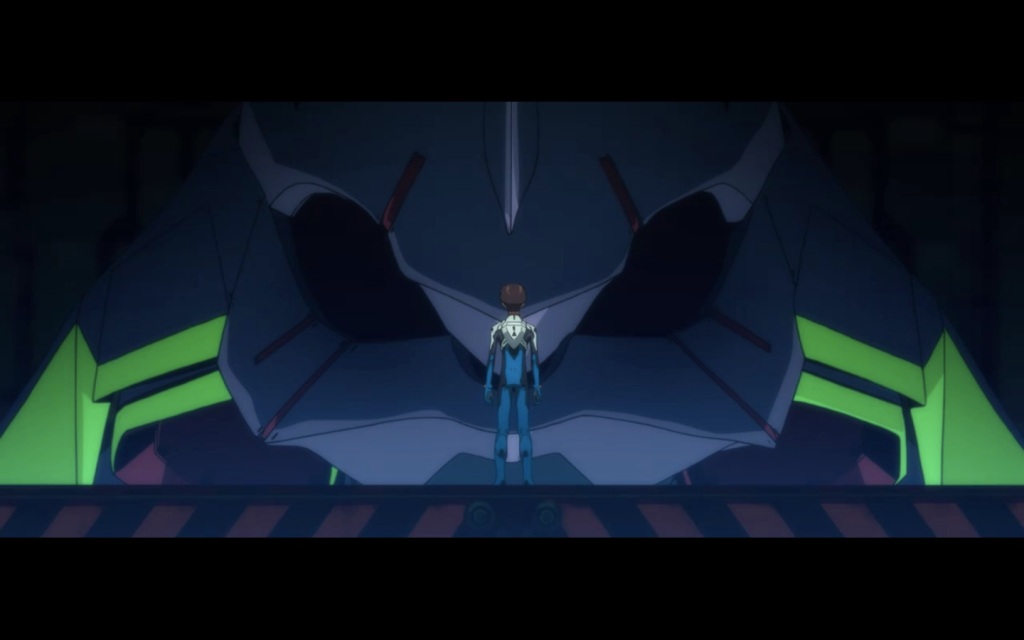
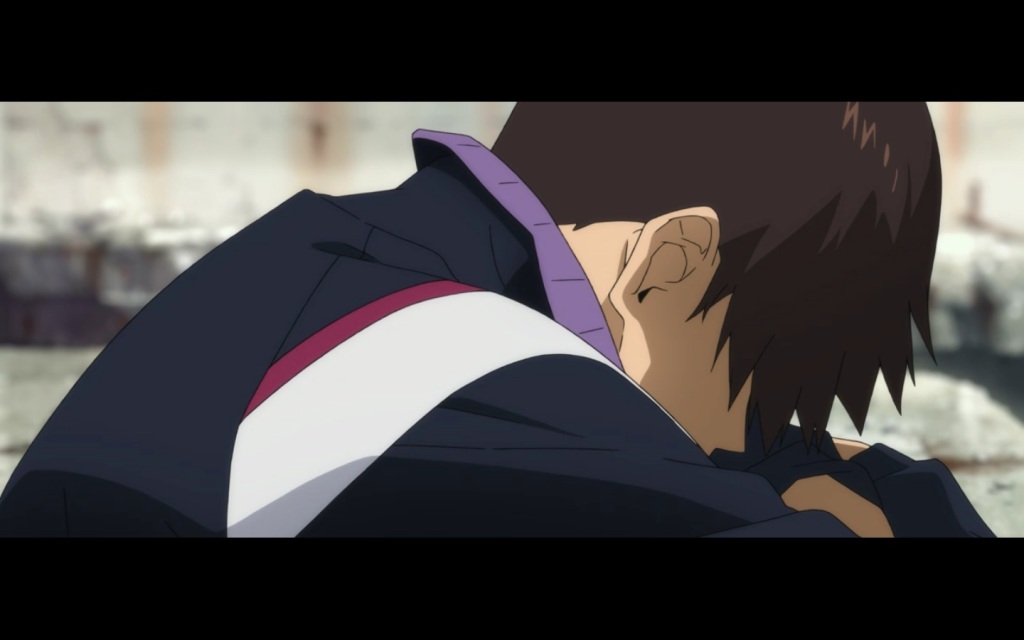
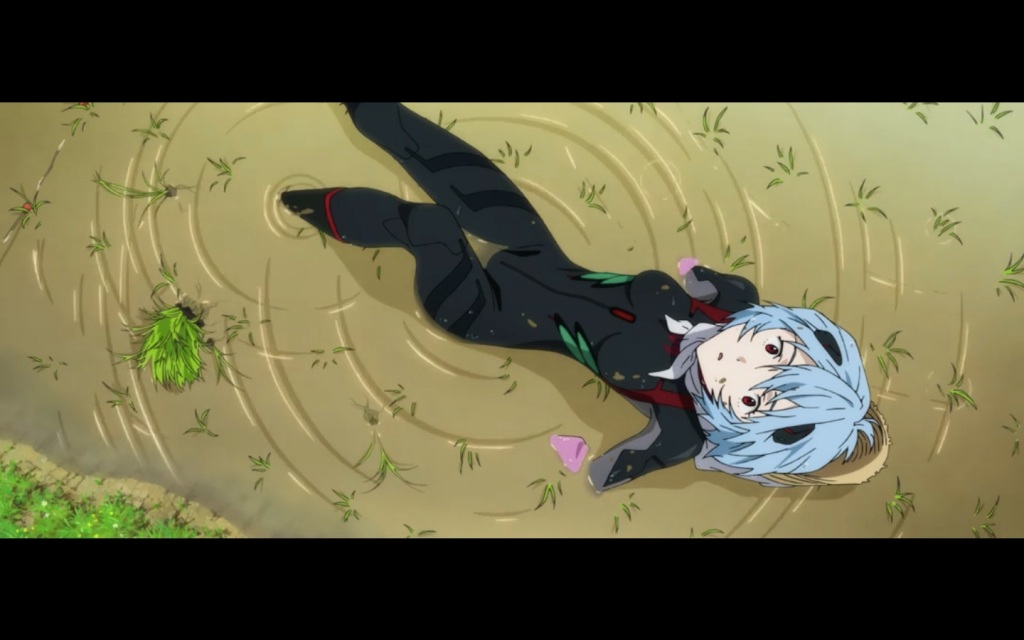
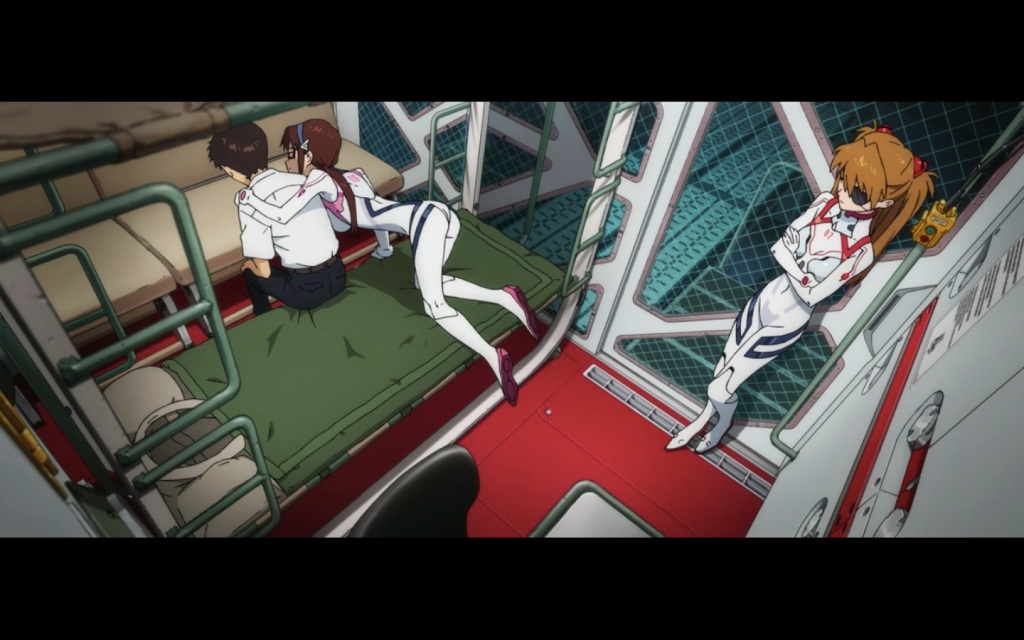
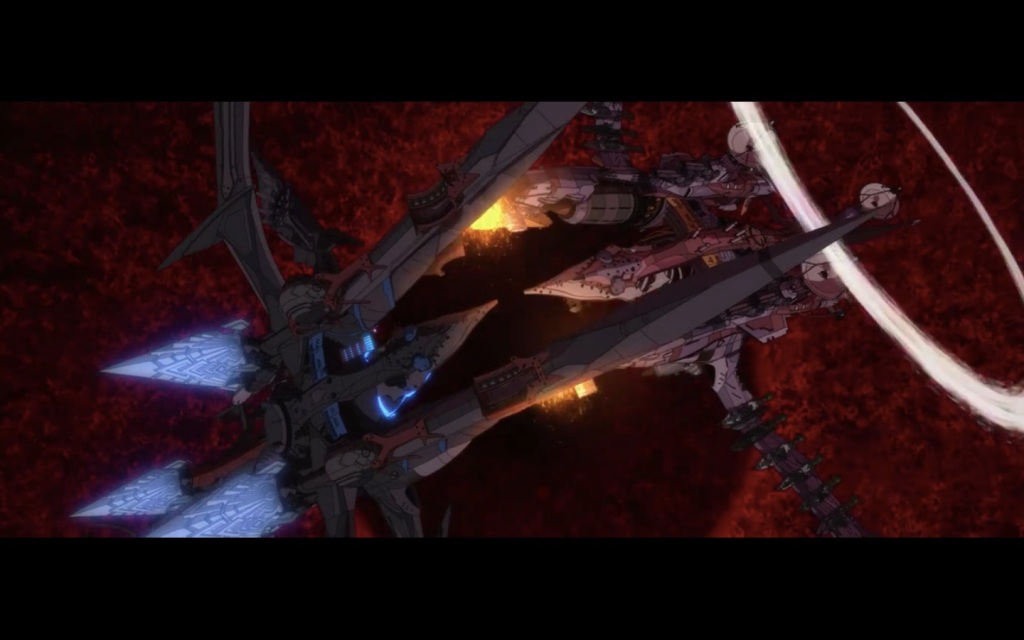
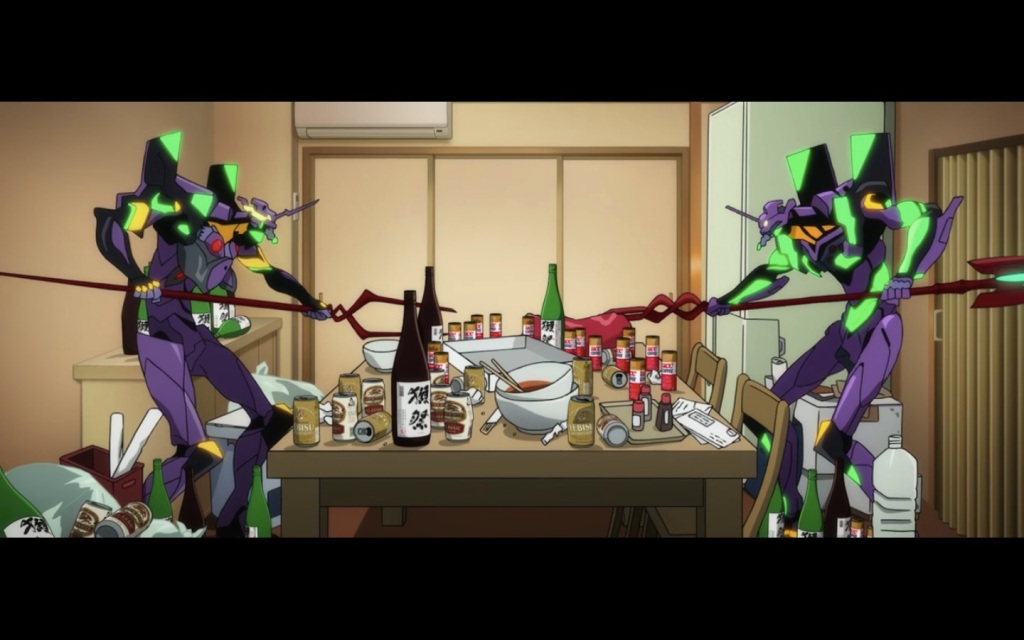
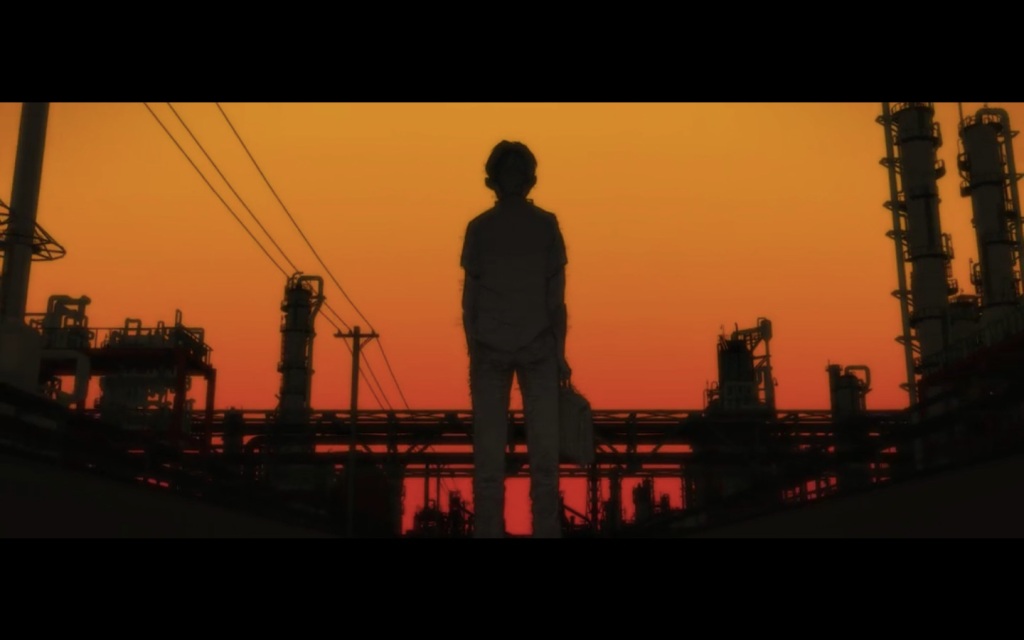
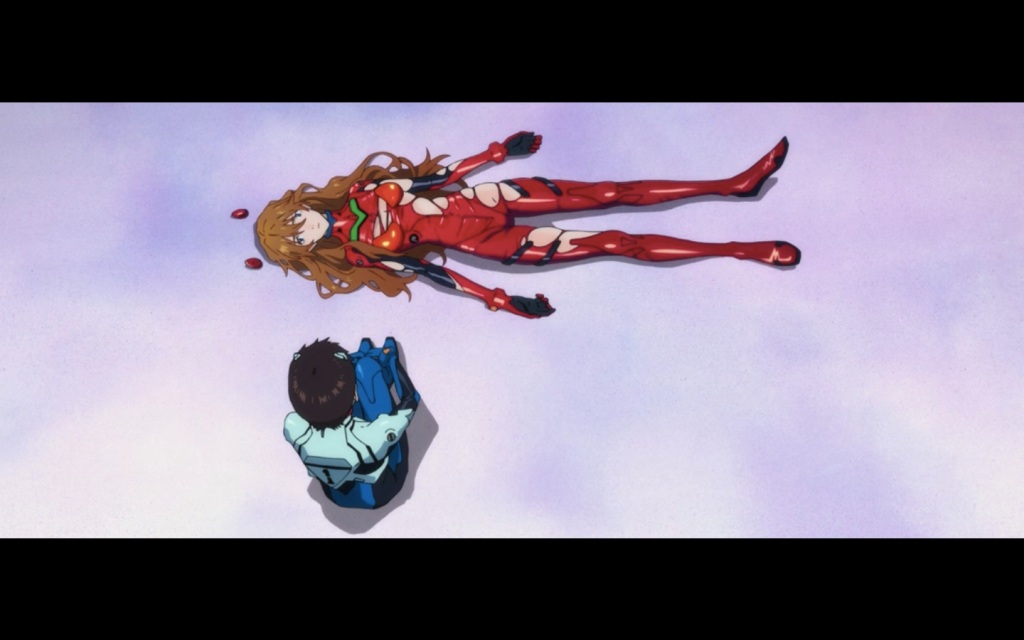
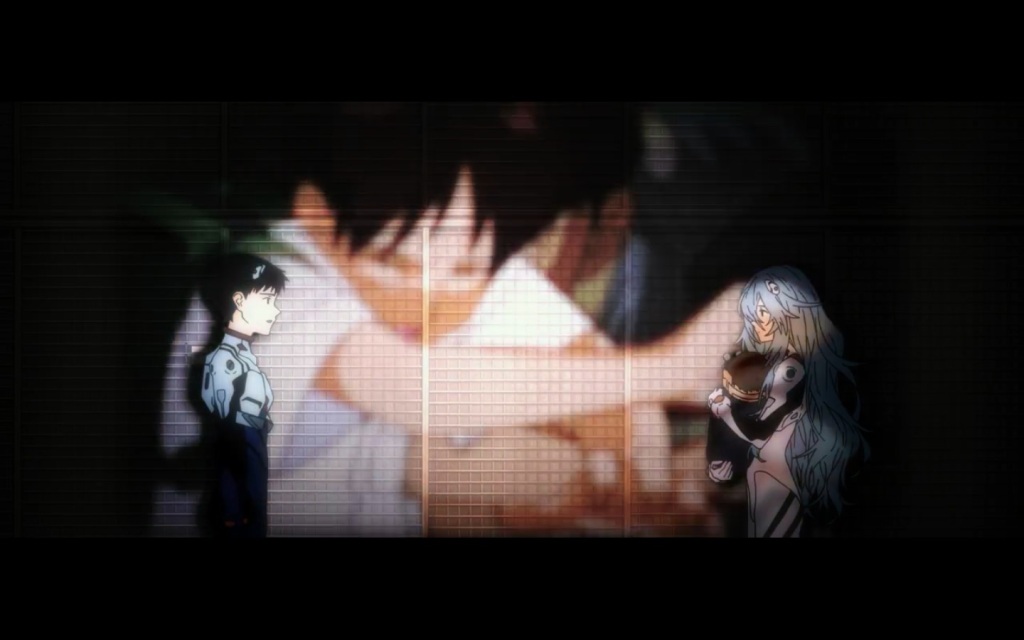
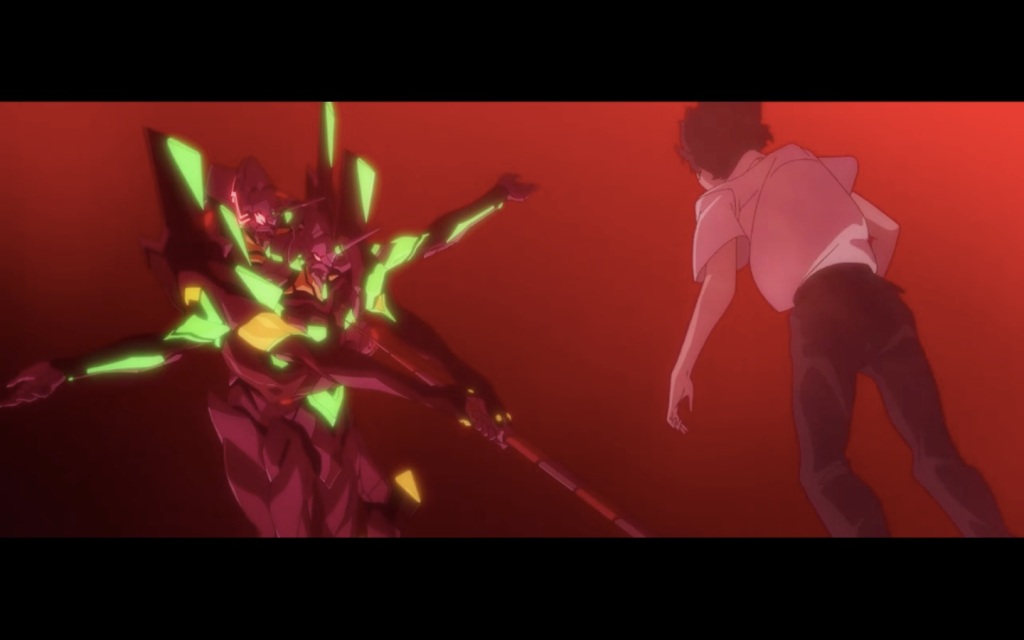
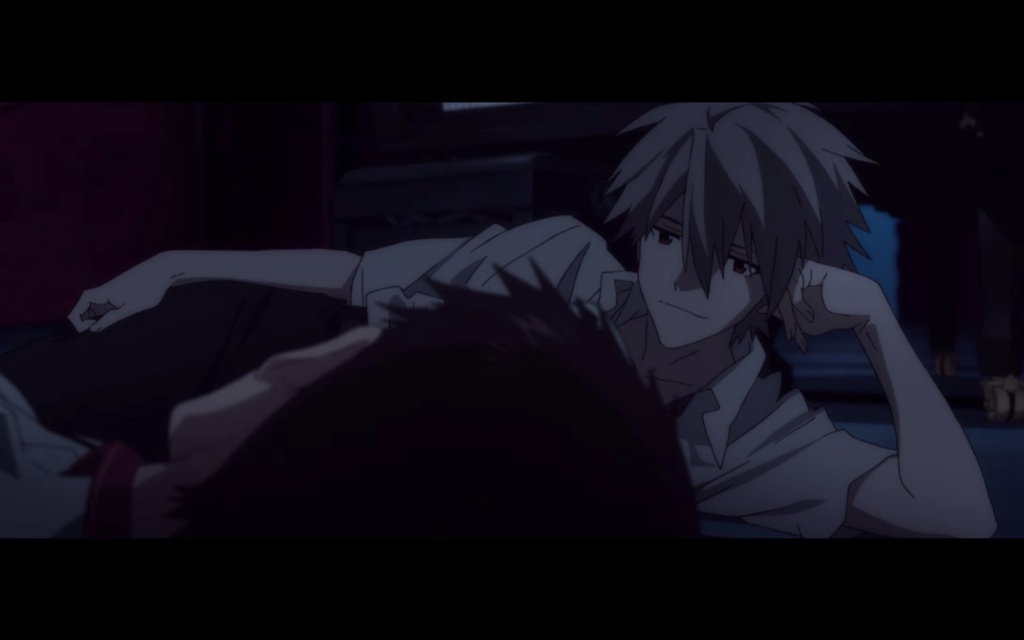
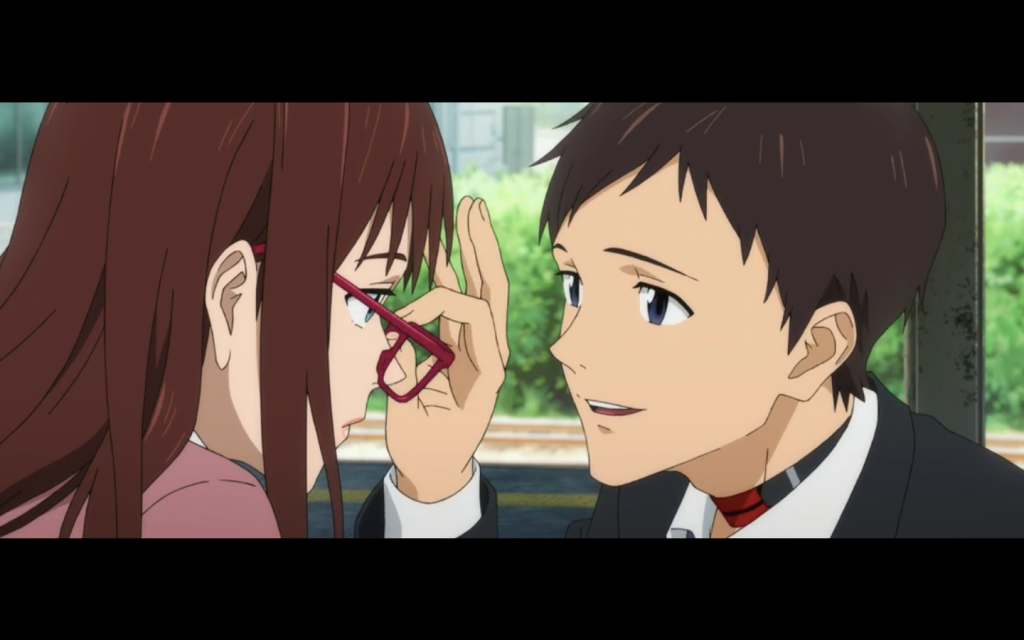
Do you think romance with a woman who was there to witness Shinji’s own birth is a reasonable “romantic” ending that is thematically consistent with the films own conclusion? The “Mary Iscariot” student of “Professor Fuyutsuki” the Mari who teased Gendo in college, and is likely very close to Yui in age is somehow a reasonable romantic pairing for this adult Shinji we see in the finale? Asuka’s line after Mari inquires about her and Shinji Asuka clearly states that Shinji “needs a mother not a lover” Am I mean’t to see Mari as a mother figure? LOL
We don’t really know anything about Mari (her motivations, connection to NERV, SEELE, Kaji, Asuka, Shinji really anyone, how she can pilot an Eva, WHY she can, how she activates Beast Mode in 2.0, why she is content to help WILLE for 14 years and just read books
This shit ain’t right.
LikeLike
Pingback: Kio Shimoku Twitter Highlights August 2021 | OGIUE MANIAX
Pingback: The Unquenching Desire for Villains: 9/11, 20 Years Later | OGIUE MANIAX
Pingback: Let’s Talk Evangelion in Shinkalion Z | OGIUE MANIAX
Pingback: Pumpkin Spicy Takes: Ogiue Maniax Status Update for September 2021 | OGIUE MANIAX
Pingback: Best Anime Characters of 2021 | OGIUE MANIAX
Pingback: The Roles of “Characters” in Mecha Anime | OGIUE MANIAX